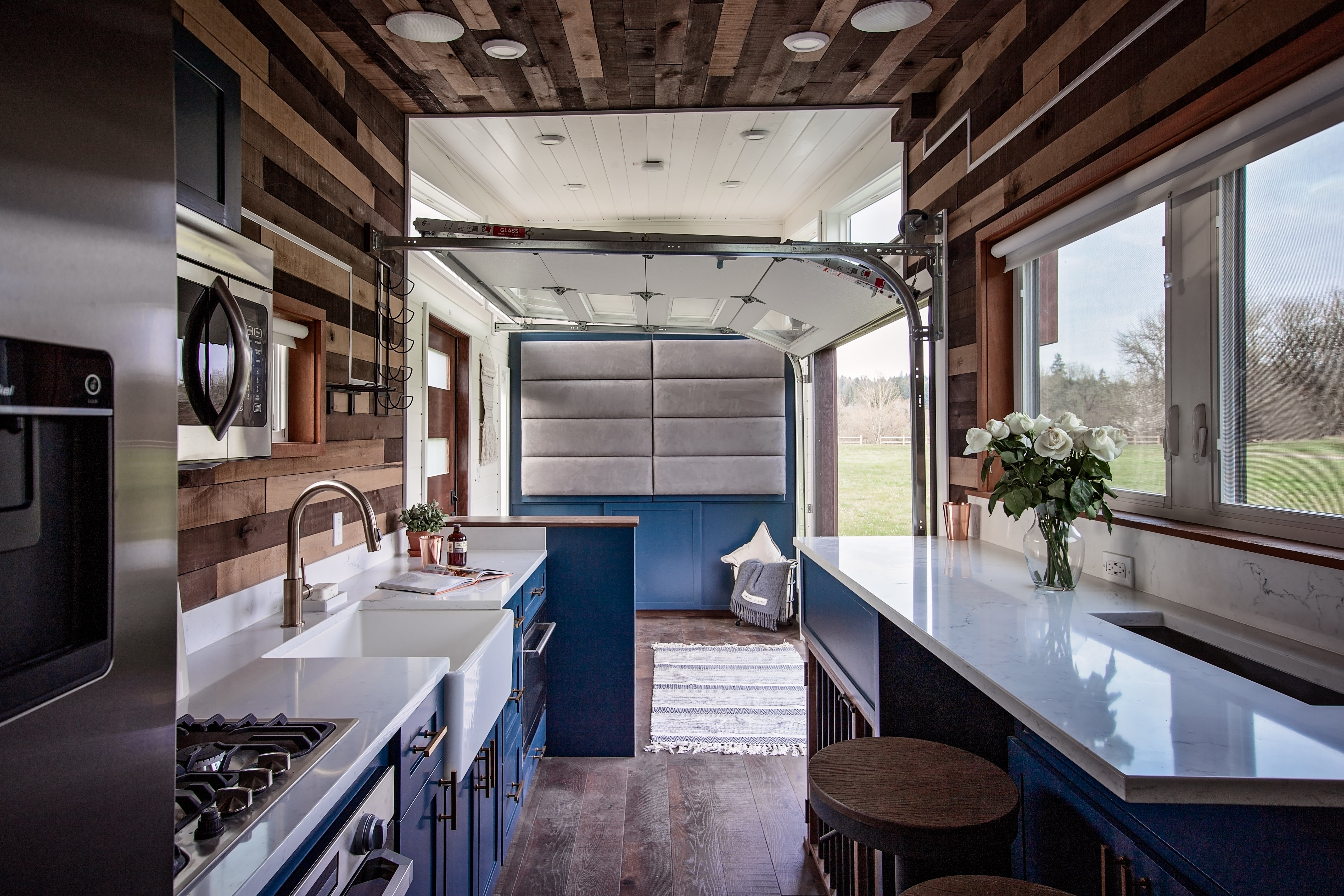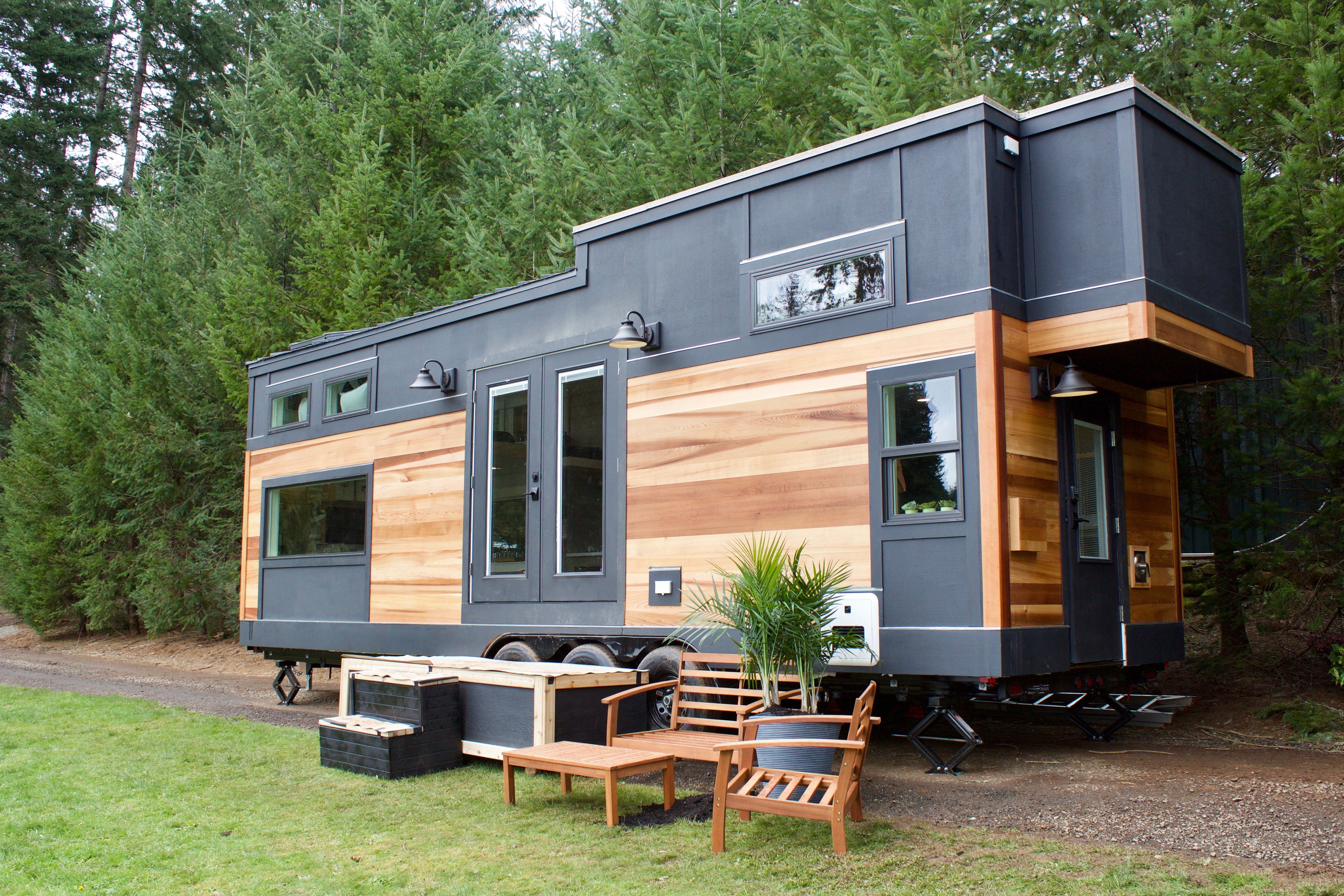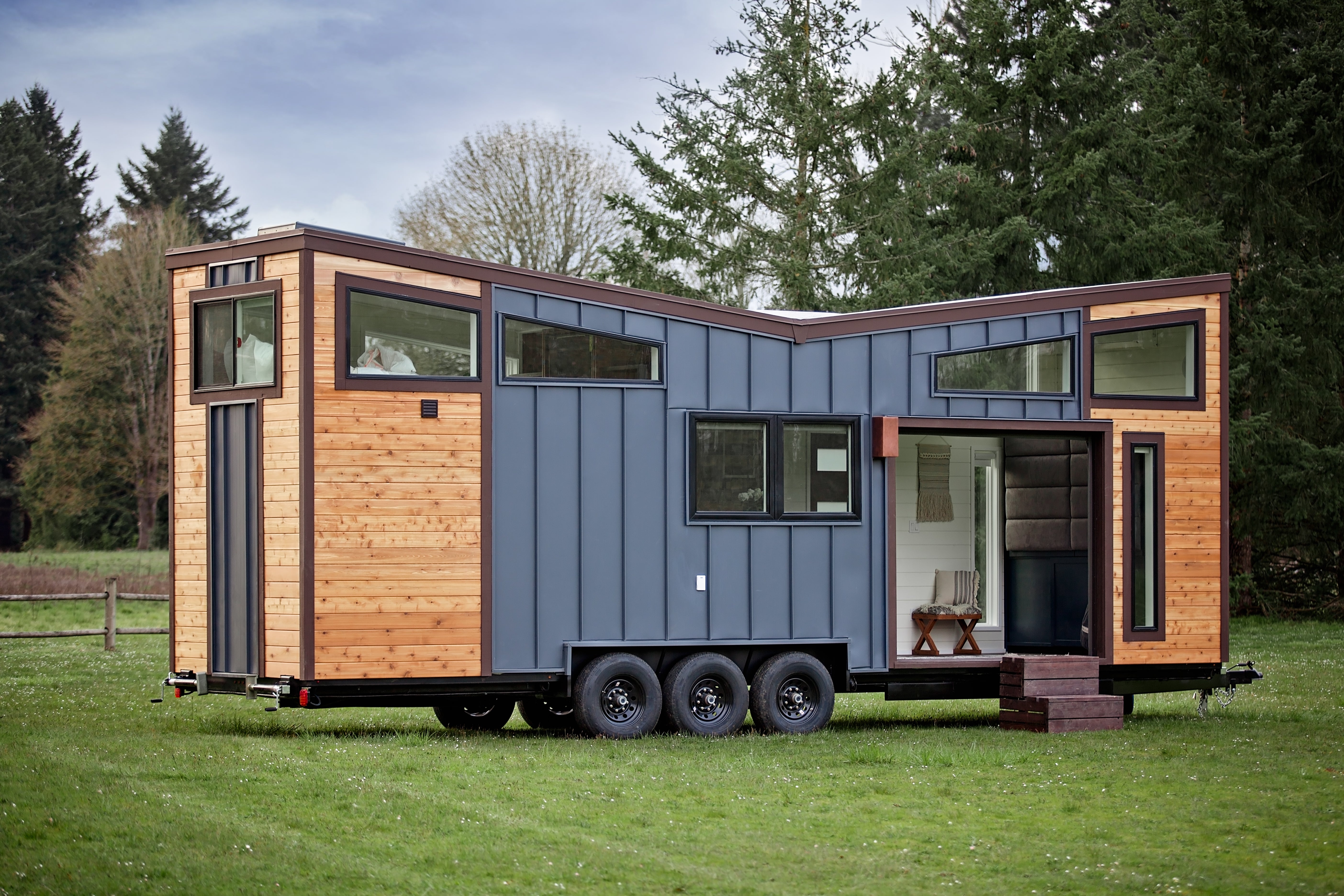Tiny homes are more than a trend—they’re a smart, sustainable solution for those who value simplicity, efficiency, and affordability. Whether built on wheels, fixed to a slab, or converted from a shipping container, these compact dwellings make the most of every square metre.
Because space is limited, every design choice matters. And few choices impact comfort and functionality more than your doors and windows. They do more than connect your home to the outdoors—they control light, airflow, insulation, and security. Get it right, and your small space can feel bright, spacious, and liveable. Get it wrong, and you’ll quickly feel cramped and uncomfortable.
In this guide, we’ll walk through the key things to consider when choosing doors and windows for a tiny house. We’ll look at space-saving styles, frame materials, glazing, and what works best for timber, steel, or container builds—so you can make smart, practical decisions from the start.
Key Considerations for Doors and Windows in a Tiny Home
Choosing the right doors and windows in a tiny house isn't just about style—it's about making the most of your limited space. These features directly impact how spacious your home feels, how well it performs in different climates, and how comfortable it is day to day. From weight and structural compatibility to insulation and airflow, the right selections make all the difference. Let’s take a closer look at what matters most.
Maximising Space and Light
In a tiny home, natural light is your best friend. It opens up the space visually and improves liveability. Well-placed windows and glazed doors can make even the smallest room feel open and airy. Large panels of glass—like those in sliding or bi-fold doors—can visually extend your living area, connecting it to the outdoors.
It’s also worth thinking about airflow. Cross-ventilation—where windows or doors are placed on opposite walls—encourages natural cooling and helps with moisture control. This can be especially useful in kitchens and bathrooms where space is tight, but airflow is essential.

Weight and Structural Compatibility
Every kilo counts in a mobile tiny home or container conversion. Heavy materials can throw off your weight distribution and affect towing or structural stability. That’s where aluminium frames come into their own. They’re lightweight, strong, and rust-resistant—ideal whether you’re building from timber, steel, or a shipping container.
Unlike timber, which can swell or rot, or steel, which needs more upkeep, aluminium handles the elements without fuss. It’s also easy to work with during installation, which is great news if you’re doing the build yourself.
Insulation and Climate Control
Tiny homes heat up and cool down faster than standard houses, so insulation matters—especially around windows and doors. Poorly insulated frames or single-glazed windows can quickly lead to unwanted temperature swings.
Look for double glazing where you can, and consider the frame materials too. Aluminium frames with thermal breaks, or at the very least good seals, can significantly improve energy efficiency. The same goes for doors—especially large glass ones. They should shut tight and keep the elements out while still letting natural light in.
Security and Privacy
With fewer rooms and more exposure to the outdoors, security and privacy are key. Lockable windows and secure entry doors are a must—even more so if your home is on wheels or in a remote area. For windows, frosted glass or built-in blinds can offer privacy without blocking the light.
And remember, security doesn’t need to come at the cost of good design. Many modern door and window systems come with discreet locks and sleek finishes that blend seamlessly with tiny home aesthetics.
Common Door Types for Tiny Homes
In a tiny house, every door needs to earn its place. With limited square footage, you want styles that maximise usable space, bring in natural light, and work well in tight or multifunctional areas. The right door can help create better flow, improve ventilation, and connect your home with the outdoors—all without eating into valuable living space.
Sliding Glass Doors
Sliding doors are a no-brainer for tiny homes, especially those on wheels or built for off-grid living. Because they move horizontally, they don’t need swing clearance—making them ideal for compact decks or narrow sites where a hinged door would be in the way.
They also serve double duty: large glass panels boost natural light, visually expand the living area, and improve airflow when open. In many cases, a well-placed sliding door can remove the need for extra windows, simplifying the wall layout.
French Doors
French doors are all about style—but they can work in a tiny house if you’ve got space outside for them to swing open. They’re often used at the rear of a tiny home to create a double-door opening to a deck or garden, especially in fixed builds. Just be sure your site allows enough clearance for smooth operation.
If you're going for a traditional or rustic look, they can make a strong design statement—but they do take up more space than other options.
Bi-Fold or Stacker Doors
Bi-fold and stacker doors are perfect if you’re building a container-based tiny home or want to open up an entire wall. They fold or slide away neatly, allowing for full-width access and that seamless indoor-outdoor connection that makes small homes feel big.
Just keep in mind that they require good structural support and can be heavier—so they’re better suited to fixed tiny homes rather than mobile ones.
Entry and Internal Doors
Your main entry door needs to do a lot: keep you safe, seal out weather, and ideally, let in light. Solid-core doors are a good choice for durability and insulation, but if you want to brighten up the entryway, consider a glass insert or full glass panel with proper locking hardware.
Inside the house, space-saving is everything. Pocket doors, barn doors, or lightweight swing doors can help divide up space without cramping it. Some tiny homes skip internal doors altogether—using curtains or clever layout choices instead.

Choosing the Right Windows for Your Tiny House
In a tiny house, every square metre counts—and so does every window. You’re working with less wall space, limited weight allowances, and a need for multifunctional design. Windows play a critical role not just in lighting and ventilation, but also in making your home feel larger and more comfortable. Here’s how to make the best choices when space is tight.
Fixed vs. Operable Windows
Fixed windows don’t open, but they let in loads of natural light and offer uninterrupted views. In a tiny home, they’re great for framing the outdoors and creating a feeling of openness—without taking up any extra wall or floor space. You can install them high up to bring in light without sacrificing privacy or storage below.
Operable windows, on the other hand, are essential for airflow—especially if your tiny home doesn’t rely heavily on mechanical ventilation. They help control condensation, especially in small wet areas like bathrooms or kitchens. A good mix of fixed and operable windows gives you the light you want and the ventilation you need, without overloading your walls.
Awning and Sliding Windows
Awning windows are ideal for tight, practical spaces in tiny homes. Because they open outward from the top, you can leave them open in light rain, and they won’t interfere with interior fittings. They’re handy in kitchens or bathrooms where you might place a window above a bench or sink.
Sliding windows are another great fit for small homes. Since they don’t open outward or inward, they’re perfect where external clearances or tight interior spaces are an issue—like in loft bedrooms or along walkways. They also double up nicely with sliding doors, creating a cohesive, compact look.
Both styles are lightweight and easy to operate—two major pluses for off-grid and mobile setups.
Window Placement for Airflow and Views
In a tiny house, airflow is critical. Heat builds up quickly in small spaces, especially in summer or when cooking. The trick is to place windows on opposite walls—ideally at different heights—to encourage natural cross-ventilation. This lets hot air escape and cooler air flow through without needing a powered fan.
High windows are a smart way to boost natural light while keeping wall space usable below. This is especially useful in a loft or kitchen where you might want overhead cabinets or extra shelving. And when your space is small, framing a great view—like bushland, beach, or your backyard—can make your home feel much larger than it is.
Best Materials for Frames in Tiny Homes
The frame material of your doors and windows plays a big role in how your tiny home performs—especially when it comes to weight, durability, and climate resistance. Whether your build is mobile, off-grid, or container-based, choosing the right frame ensures your home stays comfortable, safe, and low-maintenance. Let’s look at the most common options and how they stack up in a small space.
Aluminium Frames
Aluminium frames are hands down one of the best choices for tiny homes—especially those built on trailers or from shipping containers. They’re strong yet lightweight, which helps keep your total build weight down (crucial for mobile homes). They’re also rust-resistant and stand up well to harsh Aussie weather, from salty coastal air to dry inland heat.
Because they don’t swell or warp, aluminium frames are a reliable option across timber, steel, or container builds. Many builders choose aluminium as their go-to for compact or off-grid homes, thanks to its low upkeep and modern look. If you’re after a high-performance option that won’t let you down, this is where most quality builds start.
Timber Frames
Timber offers a warm, classic aesthetic that works beautifully in traditional or rustic-style tiny homes. It’s a great natural insulator and adds visual softness to interiors—but it comes with some trade-offs.
Wooden frames are heavier, which can be a drawback in a mobile setup. They also need regular maintenance to prevent rot, swelling, or warping—particularly in wet or humid areas. For fixed tiny homes in mild climates, they can still be a solid choice, especially when treated or painted for protection.
uPVC Frames
uPVC is more common in the UK and Europe than in Australia, but it’s still worth a quick mention. It’s lightweight, low-maintenance, and offers good thermal performance. However, uPVC can discolour over time in harsh sun, and it’s not always easy to source in the variety of styles available in aluminium or timber.
For most Australian tiny home builds—especially those exposed to the elements—aluminium offers the best mix of practicality, performance, and price.
Glazing Options and Australian Standards
In a tiny home, glass plays a big role. It brings in light, opens up your space visually, and contributes to insulation and comfort. But not all glass is created equal—and not all of it meets the legal safety standards required for Australian homes. If you're building or renovating (especially DIY), understanding your glazing options and the rules around them is essential.
Single vs. Double Glazing
In small, enclosed spaces like tiny homes, insulation and noise control are crucial. Single glazing (a single pane of glass) is the more budget-friendly option, but it doesn’t do much to regulate internal temperatures or block sound.
Double glazing, on the other hand, offers a big performance boost. With two panes of glass separated by a sealed air gap, it insulates better, helps regulate indoor temperatures, and reduces noise—especially useful if your home’s near a road, school, or in an urban area. It’s also helpful in tiny homes, where moisture and heat build-up can happen fast. The better your glazing, the more comfortable your space will be year-round.
Glass Safety and Legal Compliance
In Australia, the National Construction Code (NCC) outlines mandatory safety standards for all glazing used in residential buildings, including tiny homes. If you’re designing or building yourself, it’s essential you choose the right type of glass for each area of your home.
You can review the current regulations on the National Construction Code’s Glazing Standards
As a general guide, Grade A safety glass must be used in the following areas:
-
All glass doors
-
Bathrooms (for all glass up to 2m high)
-
Side panels next to doors (if within 300mm of the door and under 1200mm from the floor)
-
Any area that could be mistaken for a doorway or opening
-
Low-level glass (where the glass is below 1.2m from the floor—these areas require a minimum thickness of 5mm)
These requirements are in place to prevent injuries in the event of breakage, especially in small homes where glass is more likely to be near high-traffic or functional zones.
If you're unsure, always check with your builder or glazier to make sure the glass you’re choosing complies. And if you’re DIY-ing your build, take extra care—non-compliant glazing can delay approvals or even void your insurance.
Final Tips for Tiny House Doors and Windows
Before you lock in your window and door selections, here are a few quick tips to help you avoid common pitfalls and make the most of your space:
-
Measure multiple times before ordering
Tiny homes leave little room for error. Always double-check your rough openings and confirm finished sizes before ordering. -
Consider awning windows for rainy climates
They’re perfect for letting in fresh air without water intrusion, especially when installed in kitchens or bathrooms. -
Use insect screens and locks
With windows and doors often open for ventilation, flyscreens are essential. Don’t forget to include quality locks for security—especially in mobile or remote setups. -
Match window style to door design for consistency
Choosing the same frame colour or glass style across all openings will make your tiny home feel more polished and cohesive.
Conclusion
Doors and windows do more than let light in—they shape how your tiny home feels, functions, and performs. From sliding glass doors that open up a small space, to aluminium-framed windows that handle harsh Aussie conditions, the right selections will help you create a home that’s light-filled, comfortable, and practical.
If you're building a tiny home in Perth, Australia, look no further than Ross’s Discount Home Centre for your doors and windows. We stock high-quality aluminium options ideal for any tiny home build.






Share: